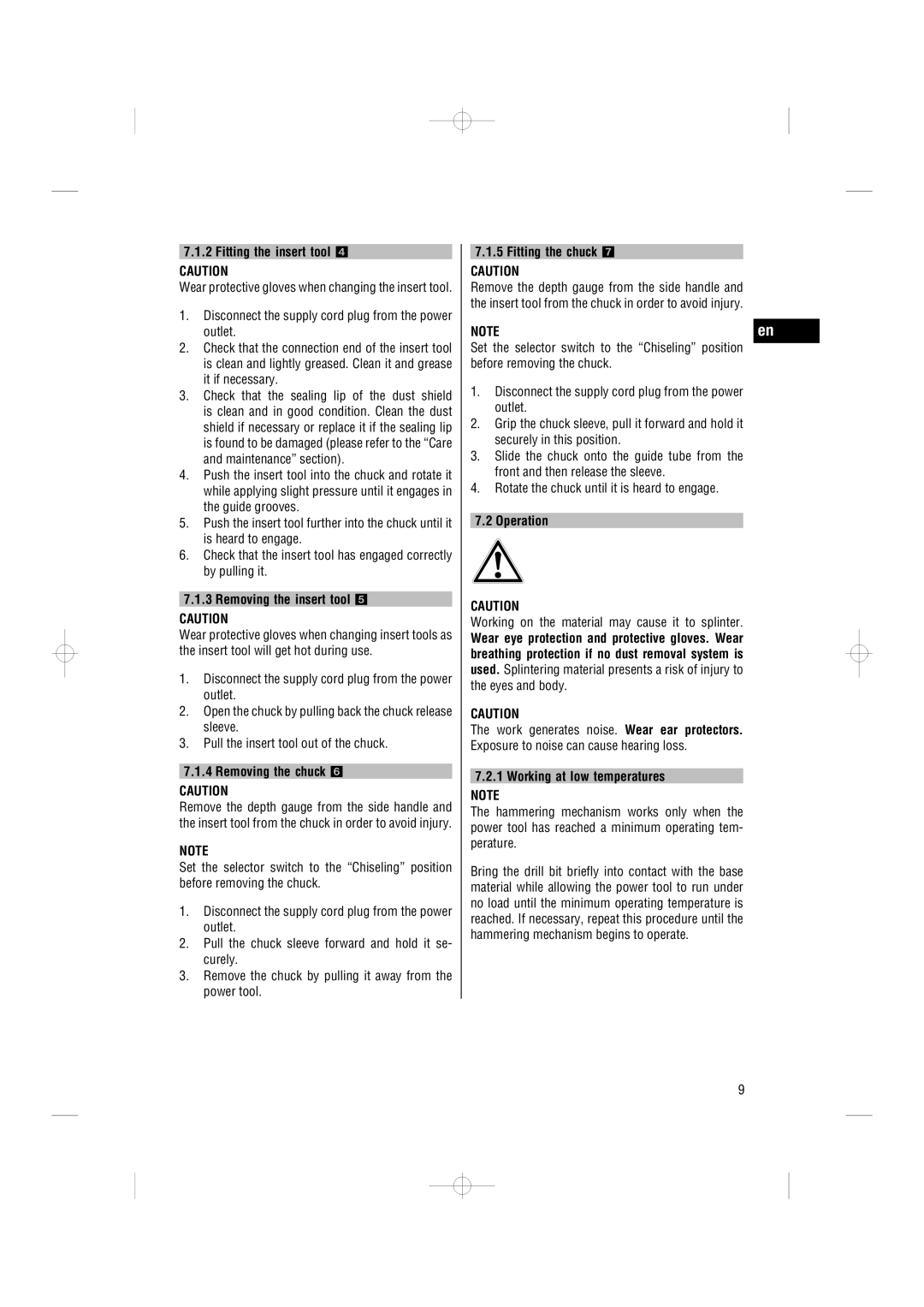
7.1.2 Fitting the insert tool 4
CAUTION
Wear protective gloves when changing the insert tool.
1.Disconnect the supply cord plug from the power outlet.
2.Check that the connection end of the insert tool is clean and lightly greased. Clean it and grease it if necessary.
3.Check that the sealing lip of the dust shield is clean and in good condition. Clean the dust shield if necessary or replace it if the sealing lip is found to be damaged (please refer to the “Care and maintenance” section).
4.Push the insert tool into the chuck and rotate it while applying slight pressure until it engages in the guide grooves.
5.Push the insert tool further into the chuck until it is heard to engage.
6.Check that the insert tool has engaged correctly by pulling it.
7.1.3Removing the insert tool 5
CAUTION
Wear protective gloves when changing insert tools as the insert tool will get hot during use.
1.Disconnect the supply cord plug from the power outlet.
2.Open the chuck by pulling back the chuck release sleeve.
3.Pull the insert tool out of the chuck.
7.1.4Removing the chuck 6
CAUTION
Remove the depth gauge from the side handle and the insert tool from the chuck in order to avoid injury.
NOTE
Set the selector switch to the “Chiseling” position before removing the chuck.
1.Disconnect the supply cord plug from the power outlet.
2.Pull the chuck sleeve forward and hold it se- curely.
3.Remove the chuck by pulling it away from the power tool.
7.1.5 Fitting the chuck 7
CAUTION
Remove the depth gauge from the side handle and the insert tool from the chuck in order to avoid injury.
NOTE
Set the selector switch to the “Chiseling” position before removing the chuck.
1.Disconnect the supply cord plug from the power outlet.
2.Grip the chuck sleeve, pull it forward and hold it securely in this position.
3.Slide the chuck onto the guide tube from the front and then release the sleeve.
4.Rotate the chuck until it is heard to engage.
7.2Operation
CAUTION
Working on the material may cause it to splinter.
Wear eye protection and protective gloves. Wear breathing protection if no dust removal system is used. Splintering material presents a risk of injury to the eyes and body.
CAUTION
The work generates noise. Wear ear protectors. Exposure to noise can cause hearing loss.
7.2.1 Working at low temperatures
NOTE
The hammering mechanism works only when the power tool has reached a minimum operating tem- perature.
Bring the drill bit briefly into contact with the base material while allowing the power tool to run under no load until the minimum operating temperature is reached. If necessary, repeat this procedure until the hammering mechanism begins to operate.
9
en
